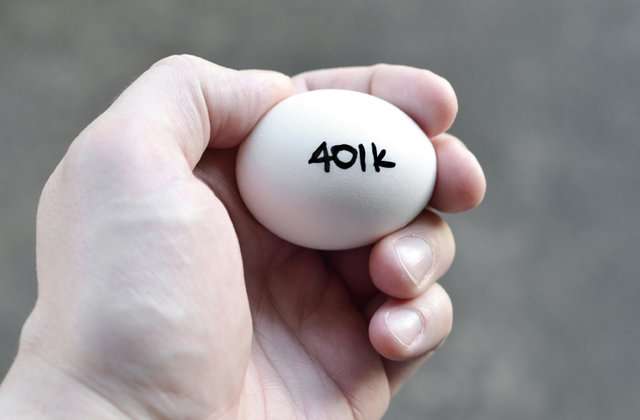
Millions of Americans have 401(k) plans , which have all but replaced the traditional pension in the workplace. But what about the self-employed – like workers in the "gig economy" who don't have a big organization to provide benefits?
Actually, if they think they're left out in the cold, they may be wrong. Unnoticed by many who work on their own is the option of opening an "individual 401(k) " with all the features of a plan from an employer. But many who are eligible just don't know about this option, permitted under the Bush-era tax cuts of 2001 but not widely touted by the financial services industry.
"It surprises me how many sole proprietors are unaware of this option and how many CPAs do not recommend this to their sole-proprietor clients," says Sterling D. Neblett, founding partner at Centurion Wealth Management in McLean, Virginia.
[See: 20 Awesome Dividend Stocks for Guaranteed Income .]
"Solo 401(k) plans are a great way for business owners to invest for retirement," says Carol Berger of Berger Wealth Management in Peachtree City, Georgia, noting the high contribution limits and wide-open investment options.
In fact, a solo 401(k) allows the account holder a tax deduction on contributions of up to $18,000 a year, or $24,000 for those 50 and older, plus up to 25 percent of earnings as "employer" contributions to a maximum of $53,000 a year, or $59,000 if older than 50. As the boss, you get to choose the investment options, typically mutual funds or exchange-traded funds from a provider like Vanguard Group or Charles Schwab Corp. (ticker: SCHW ). As with a regular 401(k), investment gains are tax-deferred and withdrawals after age 59.5 are taxed as ordinary income.
While there are various ways for self-employed people to put aside tax-favored savings, the solo 401(k) is often the most generous.
AARP, the organization for people in and nearing retirement, has a calculator for figuring maximum contributions, as do Turbotax and other tax-preparation programs. The AARP calculator shows that a 40-year-old earning $60,000 a year could put $28,652 into a solo 401(k) compared to $11,152 in a SEP IRA, $13,624 in a Simple IRA and $11,152 in a profit sharing plan.
"While both a SEP IRA and a solo 401(k) allow you to contribute to the IRS limit, currently $53,000 per year, a solo 401(k) plan reaches this maximum amount at a much lower income level," says John F. Knolle, planner with Saranap Wealth Advisors in Walnut Creek, California. A SEP IRA, for example, limits contributions to what is just the employer's share in a solo 401(k), he says.
"Ideal candidates for a solo 401(k) plan are usually sole proprietors, partnerships with no employees or one-person S corporations who are looking to contribute more than the limits allowed in an individual IRA or a Simple IRA," says Derek Mazzarella of The Bulfinch Group in Needham, Massachusetts.
[See: 7 Ways to Avoid Financial Stress Over the Holidays .]
Plans are set up through financial-services firms like mutual fund companies and brokerages. They provide the paperwork and investment options. Some firms specialize in alternatives like annuities , precious metals and other commodities.
"You'd usually use mutual funds and the risks would be the same as with an ordinary 401(k)," says Karen Lee of Karen Lee and Associates, in Atlanta. "You might be able to do individual stocks and bonds as well, based on the provider you choose."
A few things to know:
Contribution limits are based on your earned income from self-employment, though the cash put in can come from other sources like investment gains. Earnings from a regular job don't count toward the solo 401(k) limit.
You must work on your own and have no employees other than a spouse. Any employees hired after the plan is set up must be allowed to participate, and you'd have to file forms assuring they have the same rights you do.
An individual who has a 401(k) in a regular job can have a solo 401(k) for work on the side, but contributions to the two plans combined are limited to the amounts you'd face in a single plan.
Contributions are subtracted from your taxable income. But because of the interaction of various figures on your tax return, leave plenty of time to figure your contribution limits, hire a pro, or use a tax-preparation program that can handle these calculations.
While a solo 401(k) is appealing because of the substantial deduction on contributions, the law and most providers also allow Roth 401(k)s , which have no up-front deduction but allow tax-free withdrawals in retirement. A solo Roth can be a good option for those who earn too much to open a Roth IRA. Search for "traditional or Roth 401(k) calculator" for a tool to figure which type is best for you.
As the employer, you manage the plan and pay any administrative fees, though these should be small. Check before you choose a provider.
"If your account is over $250,000, you need to annually file a Form 5500 with the IRS," Lee says. "Some providers do this for you, or you can do the form yourself or ask your CPA if they would do it for you."
Like workplace plans, solo 401(k)s allow loans from the plan – up to 50 percent of the plan's value or $50,000, whichever is less, with very low interest charges that are paid back to the account. As with all 401(k) loans, these loans actually liquidate assets, rather than use them as collateral, so you'd miss any investment gains before the loan is repaid, which must be within five years.
[See: 10 Reasons to Save for Retirement in a Roth IRA .]
If a solo 401(k) sounds appealing, get moving. A plan must be set up by the end of your business's fiscal year, probably Dec. 31, for you to deduct contributions for that year. The contributions, however, can be made up to your income-tax filing deadline : April 18 for the 2016 return.
6 Strategies to Avoid Working in Retirement
Compare Offers
Compare Offers



Post a Comment